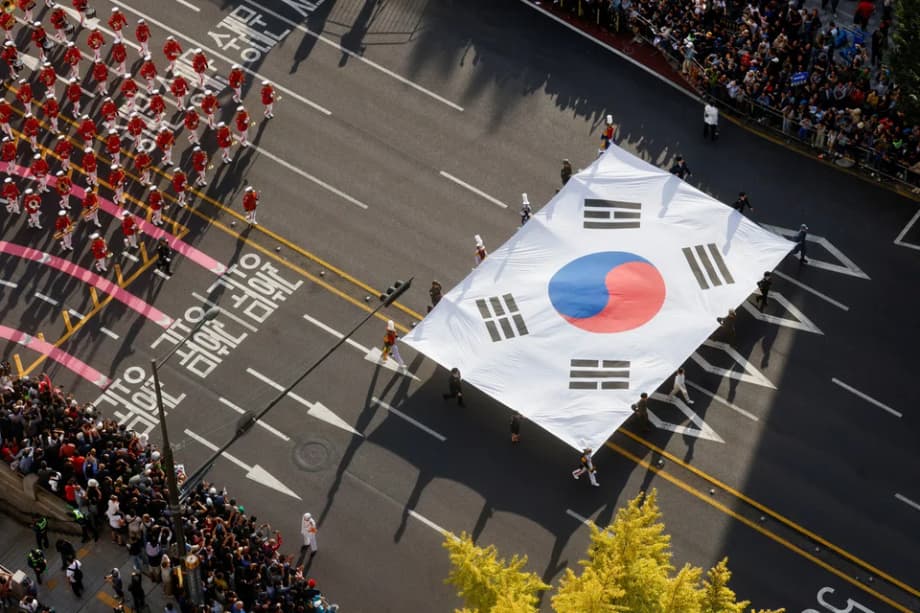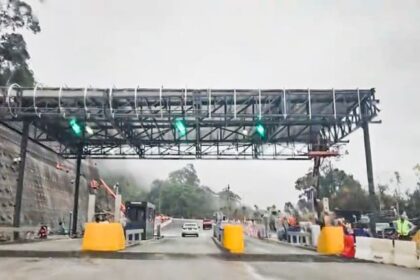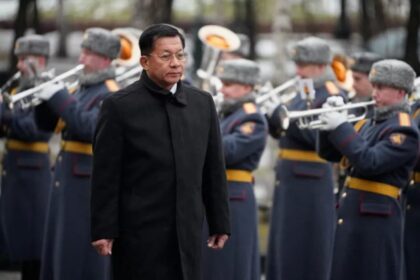Why the new training matters for a changing army
South Korea will launch a dedicated adjustment program in 2026 for conscripts from multicultural backgrounds who have trouble communicating in Korean. The plan aims to reduce language barriers in basic training and daily barracks life, and to give units consistent tools to help new soldiers adapt. Recruits who feel their Korean skills are not enough can opt into an extra week of language and adaptation training before the standard five weeks of basic training. The additional week counts toward total service time, so participants do not serve longer than peers.
- Why the new training matters for a changing army
- What the new adjustment program includes
- Who is considered a multicultural recruit, and how many are there
- What human rights investigators found and what changes aim to fix
- A society in transition and the debate over identity
- What to watch in implementation
- Ideas from civilian and allied programs
- Highlights
The initiative arrives as the composition of the conscript pool changes. The Korea Institute for Defense Analyses projects the number of multicultural soldiers to grow from about 5,000 in 2025 to nearly 9,700 by 2031. That would be roughly 5 percent of conscripted troops. At the same time, the National Human Rights Commission of Korea has reported that more than half of multicultural service members surveyed experienced communication difficulties, and that language needs often were not considered when placing recruits into roles or units.
Defense officials say the new program expands an existing track that has been offered several times a year to overseas permanent residents who volunteer for service. Starting in 2026, the broader program will include recruits with diverse ethnic and cultural backgrounds and will standardize how support is delivered. Training in the new adjustment week will include practical Korean language practice, repeated instruction in everyday and military expressions, etiquette education, unit level communication drills, military life simulations and base facility tours. The ministry will also unify entry points for multicultural recruits so that basic training support is consistent, and it plans to assign mentor soldiers, one to one where feasible, to help new troops settle into barracks life. A multilingual glossary of more than 500 military life terms will be published in English, Chinese, Vietnamese, Spanish and Japanese.
All recruits, not only those in the adjustment course, will see revamped multicultural awareness classes at basic training centers. From 2026 these lessons will be taught by civilian instructors using standardized guides distributed by the Military Human Rights Improvement Task Force, which the ministry launched in 2022 to improve conditions and protections for service members.
What the new adjustment program includes
The adjustment week is designed to build confidence and reduce misunderstandings before recruits enter the more demanding phases of basic training. The curriculum focuses on language in real military settings, from understanding shouted commands on a drill field to reading posted notices and administrative forms. The course also rehearses common conversations and problem solving, with instructors walking recruits through daily routines they will face in a barracks, chow hall and training range. The idea is to turn unfamiliar jargon into clear, repeatable tasks that recruits can perform under pressure.
How will screening work
Recruits will be able to voluntarily indicate their Korean communication level when filling out personal information forms during their physical examination. Those who believe they need extra help can join the program. Self identification encourages early support without a formal test that could stigmatize or slow enlistment.
Centralized entry and mentor support
Unifying entry points means more recruits who need help will start at training centers with the staff, materials and scheduling to provide it. Mentor soldiers within support units will be assigned where possible. Mentors can translate unit routines into simple steps, explain unwritten norms of barracks life and act as a bridge between a recruit and cadre, especially in the first weeks when small misunderstandings can quickly build into stress.
Language tools and training for all recruits
The ministry plans a military life glossary that explains more than 500 frequently used terms in five languages. Each entry will include definitions and example dialogues written in the respective language. The new multicultural awareness classes for every recruit will be taught by civilian instructors and backed by standardized teaching guides produced by the ministry’s human rights task force. That pairing is meant to improve consistency across training centers while also freeing drill instructors to focus on core military skills.
Who is considered a multicultural recruit, and how many are there
In the context of the program, multicultural soldiers include conscripts from families with a foreign parent, naturalized citizens and overseas Koreans who are based abroad but fulfill conscription obligations. The pool is growing because of the rise of international marriages and broader migration patterns over the past two decades. Defense researchers estimate that by 2031 almost one in twenty conscripts will fit this category.
South Korea requires most able bodied men to complete compulsory service, usually beginning in their early twenties. The length of service and training routines vary by branch, but the initial weeks set the tone for safety and morale. Clear communication is essential from day one, when recruits learn formations, weapons safety rules and how to respond to commands. Reducing confusion in those first weeks can head off accidents, disciplinary issues and stress that might otherwise follow a recruit into a unit.
Why language gaps in the ranks matter
Basic training uses plenty of slang, abbreviations and shorthand that even native speakers can struggle to parse at first. Recruits who are less fluent in Korean can find themselves a step behind not because of effort, but because of missed words. That gap can affect safety, especially during live fire training and field exercises. It can also deepen isolation in barracks life, where success relies on cooperation with squad mates. Practical language practice and clear reference materials can narrow these gaps quickly.
What human rights investigators found and what changes aim to fix
The National Human Rights Commission of Korea visited multiple units and surveyed more than 6,400 soldiers. It found language barriers were the most pressing challenge for many multicultural service members, and it said it saw no evidence that these needs were considered when assigning jobs or units. The commission also reported that soldiers with overseas ties faced confusion over leave and travel expense rules because they were unfamiliar with Korean administrative procedures. It criticized the ministry for not keeping separate statistics on multicultural soldiers even as their numbers grow. Recommendations included systematic management of multicultural and overseas Korean service members, job placements aligned with language proficiency, stronger diversity education and improvements to leave and travel policies.
Defense officials say the new measures are designed to meet those recommendations. The push to unify entry points and assign mentors targets the adjustment phase when recruits are most vulnerable to miscommunication. The multilingual glossary and revised awareness training are aimed at easing daily life for recruits while also helping peers and instructors understand how to communicate more clearly.
A society in transition and the debate over identity
South Korea’s armed forces are adjusting to social change. Over recent decades the country has seen a steady increase in foreign born residents and a rise in international marriages. Children from these families are coming of age and entering schools, universities and workplaces across the country, including the military. The shift has driven new public programs, new laws and a wider debate about what it means to belong.
South Korea has revised parts of its immigration and integration policy since the late 2000s, including the Act on the Treatment of Foreigners in Korea and multi year basic plans that aim to improve social integration. The government extended local voting rights to some foreign residents in 2006. These steps have happened alongside periods of public unease, with surveys showing mixed views on multicultural policy. Some citizens worry about unequal access to benefits or social order. Others argue that many programs still ask newcomers to assimilate entirely rather than creating shared spaces where different backgrounds are accepted. This debate shapes the environment soldiers bring with them when they report for duty.
Academic work on multicultural soldiers has also described an ambivalence that can lead to othering. One strand of public discourse has framed multicultural soldiers as incomplete Koreans who must prove belonging through service and performance. Another has celebrated them as extraordinary Koreans whose multicultural skills can strengthen the force. These two views seem different but both can put recruits in a box. Programs that boost language competence for those who need it, and that also train all recruits to communicate across differences, can move the conversation from labels to practical teamwork.
What to watch in implementation
Several practical questions will decide how well the program works. Screening depends on self reporting. That respects privacy, yet it also calls for careful communication so recruits feel safe asking for help. Training centers will need enough instructors and class slots to avoid bottlenecks. The ministry will also need a plan for recruits who speak languages outside the five covered in the glossary, and for those whose Korean reading skills lag behind their speaking skills.
Support after boot camp
The adjustment week can set a foundation, but adaptation continues in the unit. Mentors assigned in basic training should have a handoff to unit leaders who receive the recruits. Units can use simple tools to reinforce what recruits learned, such as posting the glossary in common spaces, pairing new soldiers with patient team leaders and allowing time to practice phrases and procedures relevant to a unit’s mission. Small investments in communication can prevent bigger problems later.
Measuring outcomes
Leaders can track progress through surveys of recruits and training cadres, reviews of safety incidents and a look at discipline data tied to miscommunication. The goal is not to single out individuals, but to measure whether the program reduces confusion in training and improves confidence. Transparent reporting, while protecting privacy, would help the public and lawmakers see where the program succeeds and where it needs adjustment.
Ideas from civilian and allied programs
Military organizations in other contexts often blend cultural education with practical support to keep missions on track. On United States bases in Korea, family readiness centers support service members and families with interpretation, local orientation and cultural programs that aim to ease daily stress. The focus is practical, connecting language and culture to specific tasks and routines that the community faces day to day. That approach can inform how Korean training units design tools that recruits actually use.
Local governments in South Korea also run programs for multicultural families, from tailored Korean language classes to parenting education and job support. While these are civilian services, they share a common aim with the military’s new plan, which is to give people clear, usable information that lowers barriers to participation. Coordination among ministries and local agencies could help the armed forces steer families to services that reinforce what recruits learn in training.
Highlights
- New adjustment program starts in 2026 for recruits from multicultural backgrounds who face Korean language challenges
- Eligible conscripts can opt into one extra week of adaptation training, followed by five weeks of basic training
- Extra week counts toward total service, so participants do not serve longer than peers
- Training includes practical language drills, etiquette, unit communication practice, simulations and base tours
- Entry points will be unified to standardize support, with mentor soldiers assigned where possible
- Ministry will publish a glossary of 500 plus military life terms in English, Chinese, Vietnamese, Spanish and Japanese
- All recruits will receive revamped multicultural awareness classes taught by civilian instructors using standard guides
- Human rights commission urged reforms after finding widespread language barriers and gaps in job placement practices
- Multicultural soldiers estimated at about 5,000 in 2025, projected near 9,700 by 2031, roughly 5 percent of conscripts
- Program expands an existing track for overseas residents and aims to deliver consistent support across training centers












